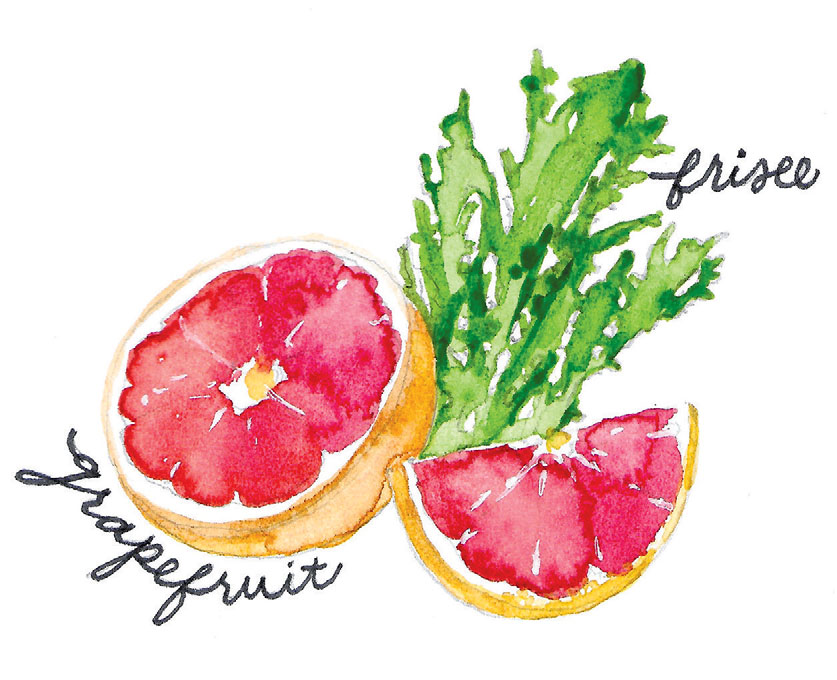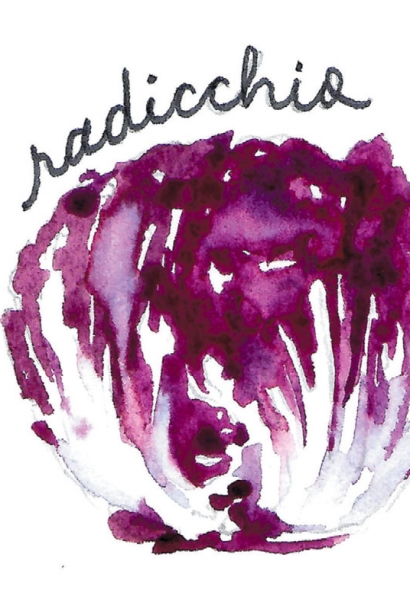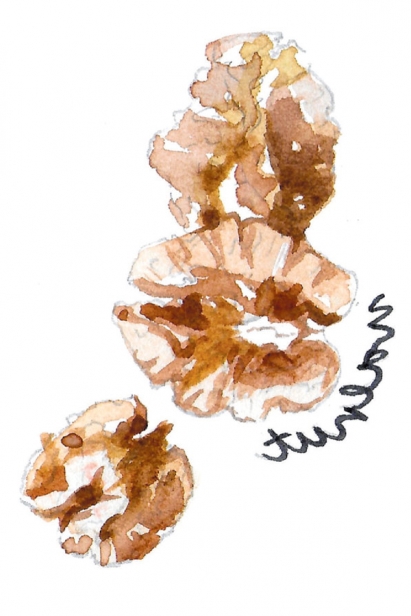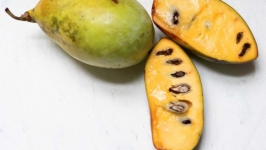The Importance of Being Bitter
In the kitchen, the taste experience we call “bitter” is important to create a sense of depth and complexity. I see this most readily in the apple. Everything that remains of the original bitterness of an apple is found in the peel. Bite through this peel into a crisp apple and a symphony of flavor explodes across your palate. Remove the covering of that same apple and often the experience is one merely of insipid sweetness. The bitter is critical to our brain’s perception of the apple’s flavor.
When something bitter crosses our palate at the beginning of a meal it’s also important to our digestive health and overall well-being. The flavor of bitter starts a chain reaction in the body. The bitter receptors on the tongue stimulate saliva, rich in protein-digesting enzymes, to surge in the mouth. This, coupled with proper chewing, begins the digestive process long before food ever reaches the stomach. At the same time as the mouth is engaging, the liver, gall bladder and pancreas are beginning to get some exercise. The bitter stimulus tells them to get their digestive enzymes and bile production up to speed and transport them to the stomach. In the stomach, hydrochloric acid is being produced in anticipation of the food it is about to receive.
The American diet used to include a bitter salad to start the meal before it was replaced with sweet iceberg lettuce and cream dressings. There was time for the body to get ready for the main part of the meal. Without this bitter stimulation, food arrives to a virtually dry stomach. What transpires at that point is similar to what happens to you when relatives drop by unannounced. All the digestive organs rush to accommodate the newcomers. They try to do their job despite being caught off-guard; often irritation and conflict occurs. If visitors continue to arrive unannounced day after day, eventually the systems responsible for digestion simply give up trying.
Many of the current health problems that plague our culture can be traced to a lack of the bitter taste in our food. Flavor development does not need to be exclusive to fancy restaurants, but it seems that the Standard American Diet makes it all too easy to access food that is sweet and salty. In fact, as more and more Americans become addicted to these simple taste experiences, our technological advances allow us to manipulate nature to suit our whims. The simple cucumber was once a well-balanced bitter, but now our ability to selectively breed new cultivars means that cucumbers are advertised each year as “never bitter.” Not only have we lost a balanced flavor profile, we’ve lost a critical part for our digestion that is dependent on the bitter stimulus.
When we neglect the importance of the bitter stimulus in our eating, we cut off our body at the knees, so to speak. There is no way to be successful at burning our food down to its components and absorbing nutrition properly. It simply doesn’t matter what is on the nutritional label, if you aren’t able to digest your food. Without bitters in our day-to-day diet, the gas, acid reflux, indigestion, pain, constipation, bloating and allergies are inevitable.
What Can We Do?
Hippocrates told us “Let thy food be thy medicine and thy medicine thy food.” Unfortunately, times were different. When Hippocrates said that, there wasn’t much difference between a cucumber and the herbs that we use for medicine. Science has allowed us to play with our food a good deal more than is really good for us. These days the cucumber makes a nice addition to our salad but doesn’t particularly make the call to our digestive organs that we need. American culture has waged a war on bitter for some time, asking us to bury “bitter” feelings and encouraging us to remove the peel from our vegetables and fruits. This means that in many cases we must turn now to the wild plant world, to the weeds we call folkloric medicine, precisely because it is there that man hasn’t fooled around yet.
The supplement aisle is now one of our best options for exciting the bitter stimulus. It is here that we find herbalists and manufacturers mixing the plants that contain varying levels of bitter, served up in tincture form. Some of the best known belong to Urban Moonshine, companies that make the traditional “Swedish Bitters” formula and our farm, Mockingbird Meadows, which offers four unique bitters flavors and a few make-your-own kits.
While there are still some foods that we can incorporate into our diet that do the same thing, it is a long journey to get the American public to accept the notion that bitter is good for us. Bitters, as a supplement, simply stand in for the missing component of our diet. Taken 10–15 minutes before a meal, they cause our saliva to rush in response and our stomach soon begins to warm. It is surprising to many how quickly the common digestive ailments clear up with just this one simple addition to their meals. To me, it is simply alimentary!
Common plants that used to be bitter:
Cucumber
Lettuce
Grapefruit
Any one of these common bitter foods added at some point during your meal will encourage good digestion, though you’ll get the best benefit if they make up your starter at the beginning of the meal.
Arugula
Beer
Bitter melon
Chocolate
Dandelion
Eggplant
Endive
Frisee
Radicchio
Rapini
Saffron
Walnuts












